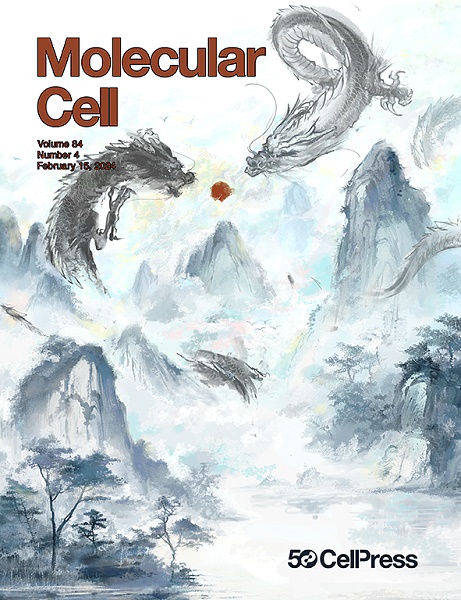瞬时启动子相互作用调节发育基因的激活
IF 14.5
1区 生物学
Q1 BIOCHEMISTRY & MOLECULAR BIOLOGY
引用次数: 0
摘要
转录诱导与各种染色质拓扑结构的形成相吻合。强有力的证据表明,基因激活伴随着启动子-增强子相互作用的普遍增加。然而,目前仍不清楚在转录激活过程中,这些拓扑结构的变化是如何在时间和空间上协调的。在这里,我们将染色质构象捕获与胚胎干细胞(ESC)分化过程中的转录和染色质图谱分析相结合,以确定三维基因组重组与转录转换之间的关系。通过这种方法,我们可以确定与转录诱导程度相关的不同拓扑学改变。我们检测了瞬时形成的相互作用,并通过基因缺失证明了相关的远端调控元件(DREs)以及这些相互作用的适当形成和破坏可促进相关基因的转录诱导。总之,我们的研究将拓扑动态与转录诱导的幅度联系起来,并发现了一种未被描述的具有转录重要意义的 DREs 类型。本文章由计算机程序翻译,如有差异,请以英文原文为准。

Transient promoter interactions modulate developmental gene activation
Transcriptional induction coincides with the formation of various chromatin topologies. Strong evidence supports that gene activation is accompanied by a general increase in promoter-enhancer interactions. However, it remains unclear how these topological changes are coordinated across time and space during transcriptional activation. Here, we combine chromatin conformation capture with transcription and chromatin profiling during an embryonic stem cell (ESC) differentiation time course to determine how 3D genome restructuring is related to transcriptional transitions. This approach allows us to identify distinct topological alterations that are associated with the magnitude of transcriptional induction. We detect transiently formed interactions and demonstrate by genetic deletions that associated distal regulatory elements (DREs), as well as appropriate formation and disruption of these interactions, can contribute to the transcriptional induction of linked genes. Together, our study links topological dynamics to the magnitude of transcriptional induction and detects an uncharacterized type of transcriptionally important DREs.
求助全文
通过发布文献求助,成功后即可免费获取论文全文。
去求助
来源期刊

Molecular Cell
生物-生化与分子生物学
CiteScore
26.00
自引率
3.80%
发文量
389
审稿时长
1 months
期刊介绍:
Molecular Cell is a companion to Cell, the leading journal of biology and the highest-impact journal in the world. Launched in December 1997 and published monthly. Molecular Cell is dedicated to publishing cutting-edge research in molecular biology, focusing on fundamental cellular processes. The journal encompasses a wide range of topics, including DNA replication, recombination, and repair; Chromatin biology and genome organization; Transcription; RNA processing and decay; Non-coding RNA function; Translation; Protein folding, modification, and quality control; Signal transduction pathways; Cell cycle and checkpoints; Cell death; Autophagy; Metabolism.
 求助内容:
求助内容: 应助结果提醒方式:
应助结果提醒方式:


